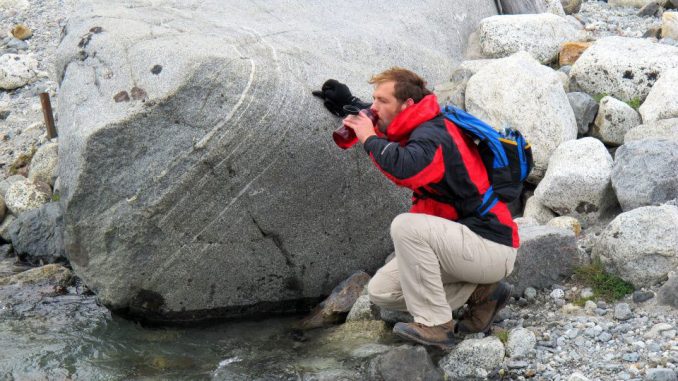
In 2007, I hiked the Fish River Canyon with a group of friends. That year, Namibia had not received as much rain as usual and we experienced the effect of it in the canyon. We didn’t have to take our shoes off once to cross the river, which is unheard of for the Fish River Canyon. As a result of the low water levels, the little bit of water that was there, was very murky and saturated with decomposing plant fibres.
I had never hiked in an area where I needed any type of water purification, so when people said I should bring chlorine tablets along, that’s what I did. Once on the trail, I added my first tablet to my drinking water, feeling quite chuffed with myself for being so prepared. After letting the water settle, I took my first sip – it was undrinkable! It was like drinking pool water. I knew I was being hydrated, but I could not get myself to drink it. What to do? Change the taste. For the next 3 days, I added Game and Oros powder to all my drinking water. Eventually my teeth started to ache from all the sugar, so I reduced the sugary powder, but also halved the chlorine tablet. This led to diarrhoea, dehydration and a not-so-happy camper.
Once I got back home after a few hard-learned lessons, I immediately started looking into what gear I needed to not end up in a similar situation again. This is my Ultimate Wilderness Hydration Kit.
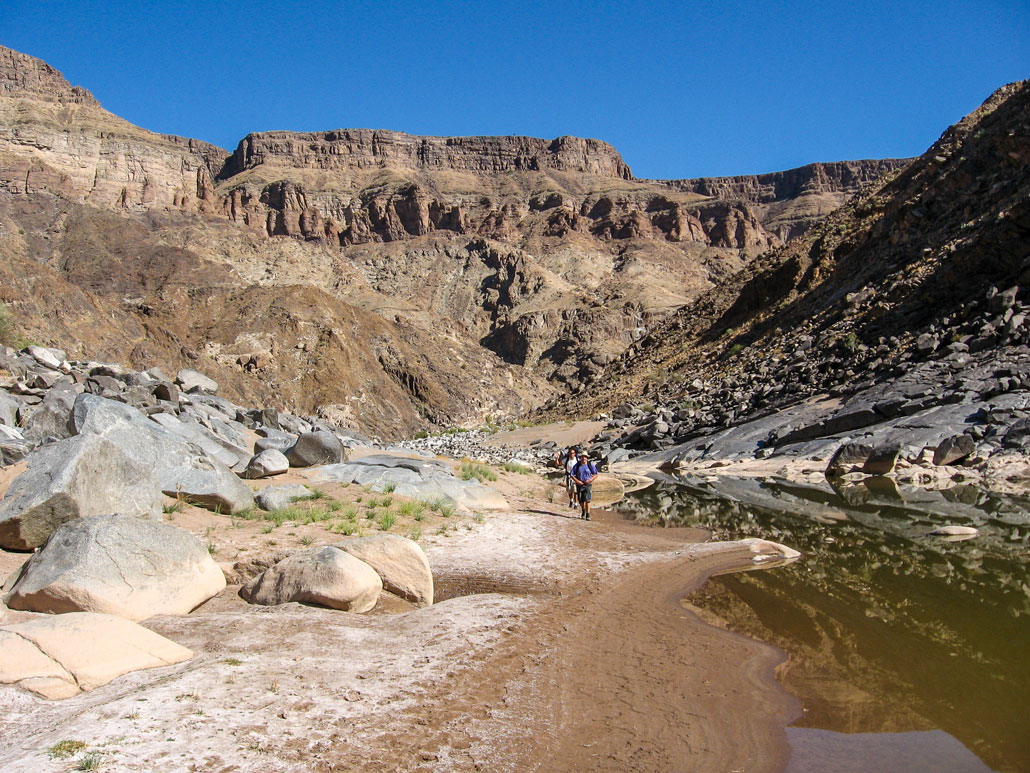
Staying hydrated
I’m sure some of you have heard this bit of hydration advice: “If you only drink water once you’re thirsty, you’re already dehydrated”. I don’t know how true that is, but I guarantee you that if you don’t replenish the water you lose, you won’t have a great time, i.e. headaches, cramps, delirium and, in extreme situations, possibly death.
When I got my first hydration bladder (also known as reservoirs), I couldn’t understand why anyone would still want to use a bottle – I could stay hydrated while moving and not have to take my pack off to get to my water bottle. Amazing! Until it got damaged halfway up a big mountain… I then realised that what you gain in convenience with reservoirs, you lose in reliability.
Since then, I use hydration bladders for day hikes, but stick to my tried and tested Nalgene bottles for multi-day hikes, where not having enough water could be disastrous – 1 wide mouth for easy refilling and 1 narrow mount for easy drinking. These bottles are fantastic! They can handle everything from freezing to boiling and are BPA-free. Due to their high heat tolerance, they can, very conveniently, double as a “warm water bottle” – my wife loves this feature!
Klean Kanteen also do high quality, stainless steel water bottles that are naturally BPA-free.
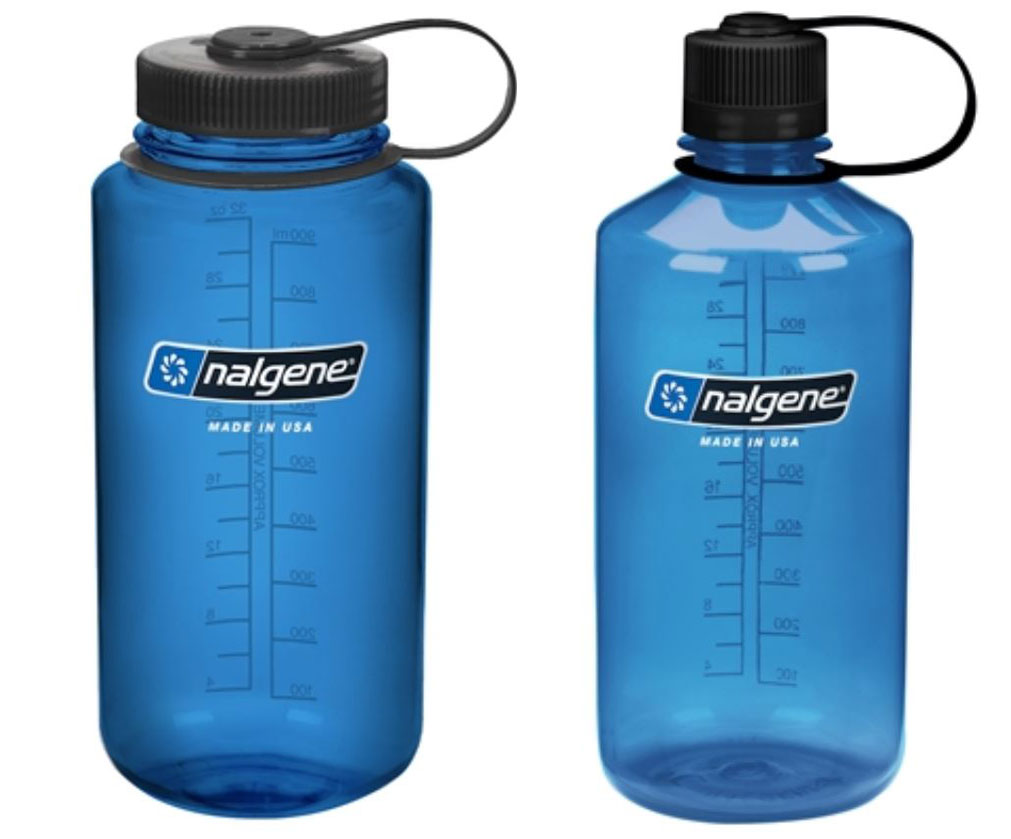
Water purification
As I’ve demonstrated with my Fish River Canyon example, the fact that you’re far away from human settlements, doesn’t automatically mean that the water is clean. Lightweight water filters have come a long way – you can have perfectly clean, drinkable water anywhere by only adding an extra 100g to your backpack.
The two most popular options are the Sawyer Mini Filter (which literally allows you to drink water from a gutter) and the SteriPen. Both award winning devices. They work very differently, but with the same result: Drinkable water, anywhere!
The Sawyer Mini Filter does what it is supposed to – filter impurities out of water, right down to 0.1 micron. However, it has two major plus-points – not only does it weigh a mere 57g, but the filter can cleaned by merely back-washing it.
The SteriPEN uses ultraviolet light to destroy bacteria and protozoan cysts without the effort required by many pumps and filters. Additionally, unlike pumps and filters, SteriPEN UV purifiers are effective against viruses, such as Hepatitis.
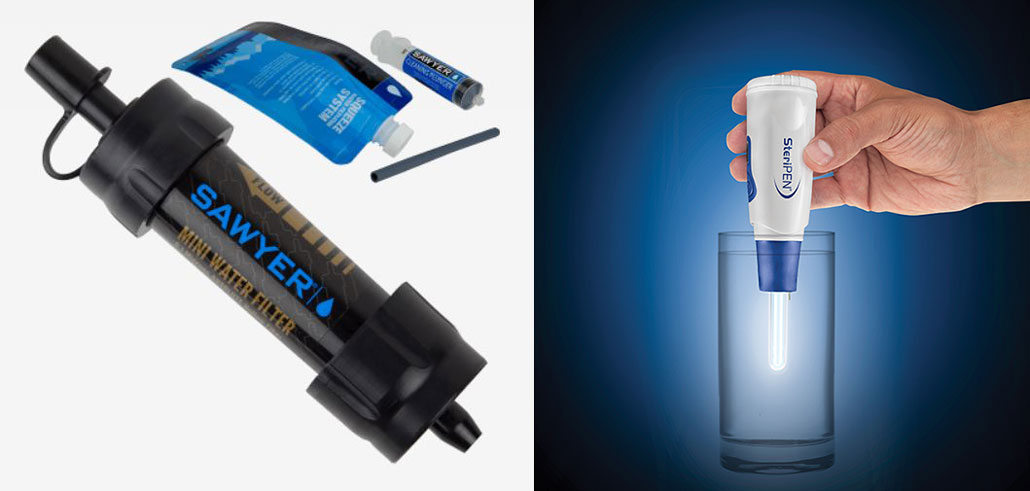
Storage
Most of the time, being able to keep a few extra litres of water with you is more an issue of convenience than survival. For instance, if you’re spending a night in a cave and the nearest river or spring is a 500m away, it’s going get quite frustrating if you’re only able to store two litres of water at a time. On the other hand, if you’re doing a mid-winter hike in the Drakensberg and all the water is frozen solid, or hiking in the Cederberg in summer and there’s hardly any water at all, being able to carry a few days’ worth of water will determine the success or failure of your hike.
Enter the MSR Dromedary. This very plain looking bag is purpose-built to store water and handle the wear and tear of outdoor use. Armed with abrasion-resistant 1,000D fabric, laminated with BPA-free food-grade polyurethane, it can handle everything from freezing to boiling. It also has built-in perimeter webbing that allows for easy carrying and hanging.
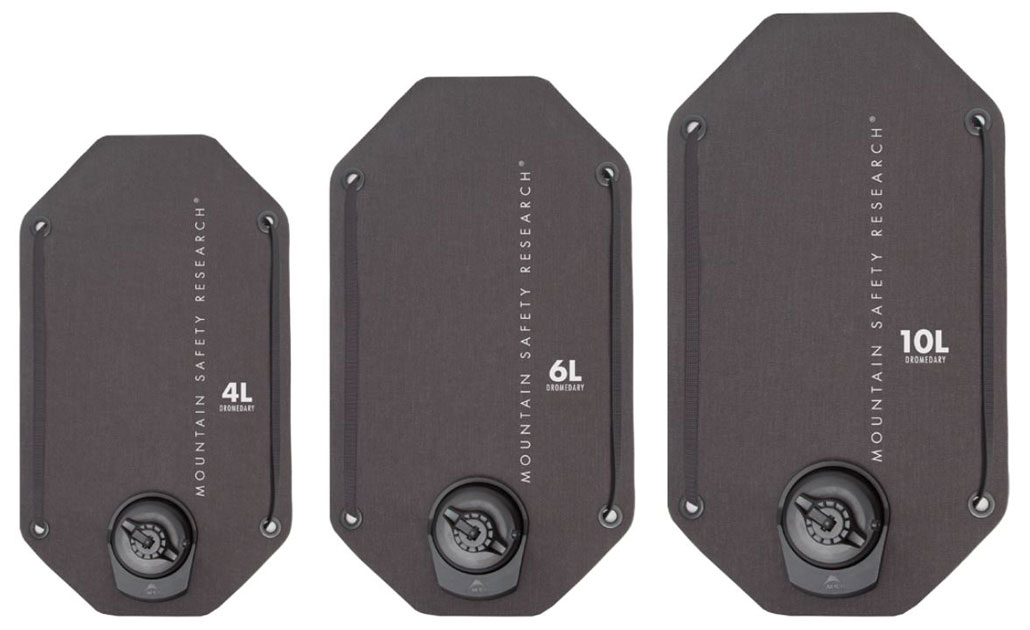
There you have it – everything you need to stay hydrated in a wilderness area. Make sure you’re prepared and don’t let hydration be the weak link in your next adventure!

I have found using an old wine box bladder perfectly fine, pop the tap off and fill up. Rolls up small, super light and you get various sizes. Oh and you get the benefit of enjoying the contents.
Brilliant idea!
It’s a bit noisy when used as a pillow 🙂
Where can I buy them empty in cape town
I sell them empty at R260 a 5l bag 🙂
you may be pleased to see the latest offering from Steripen – UV purifier, micro sediment filter + 4L storage/bag all in one !
https://www.rammountain.co.za/product/steripen-quantum-rapid-purification-system/
That is brilliant! Thanks Simon